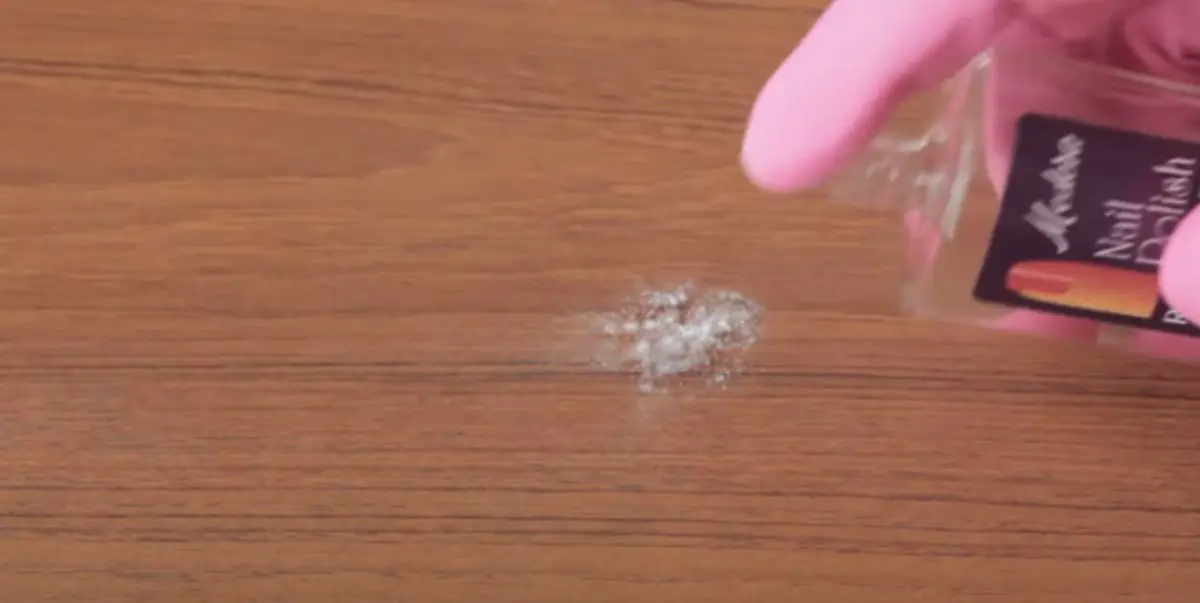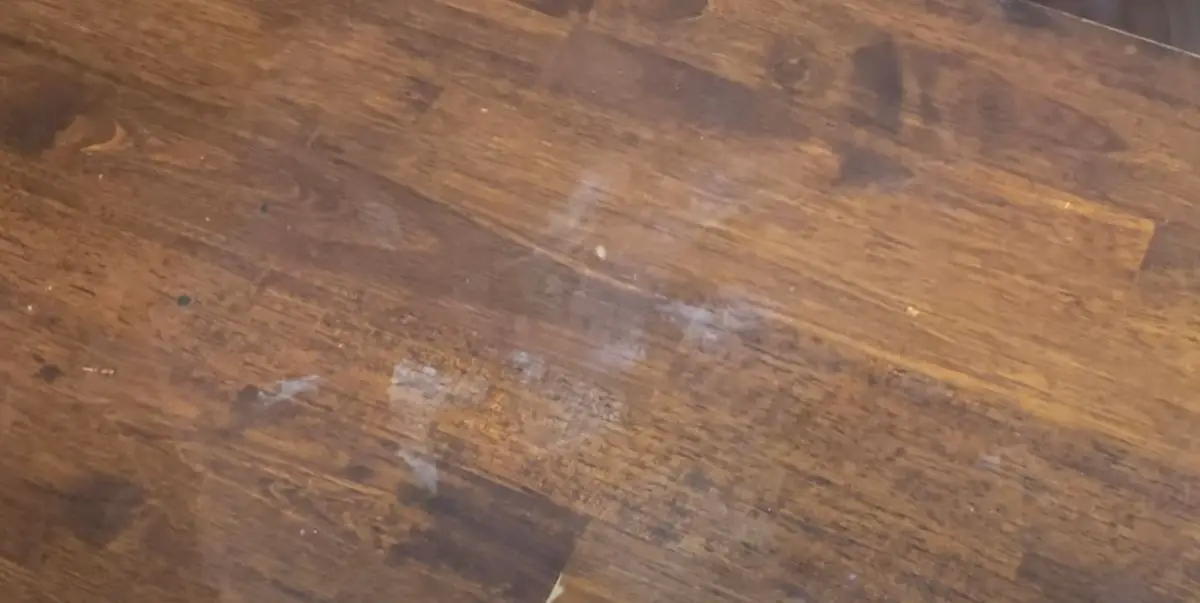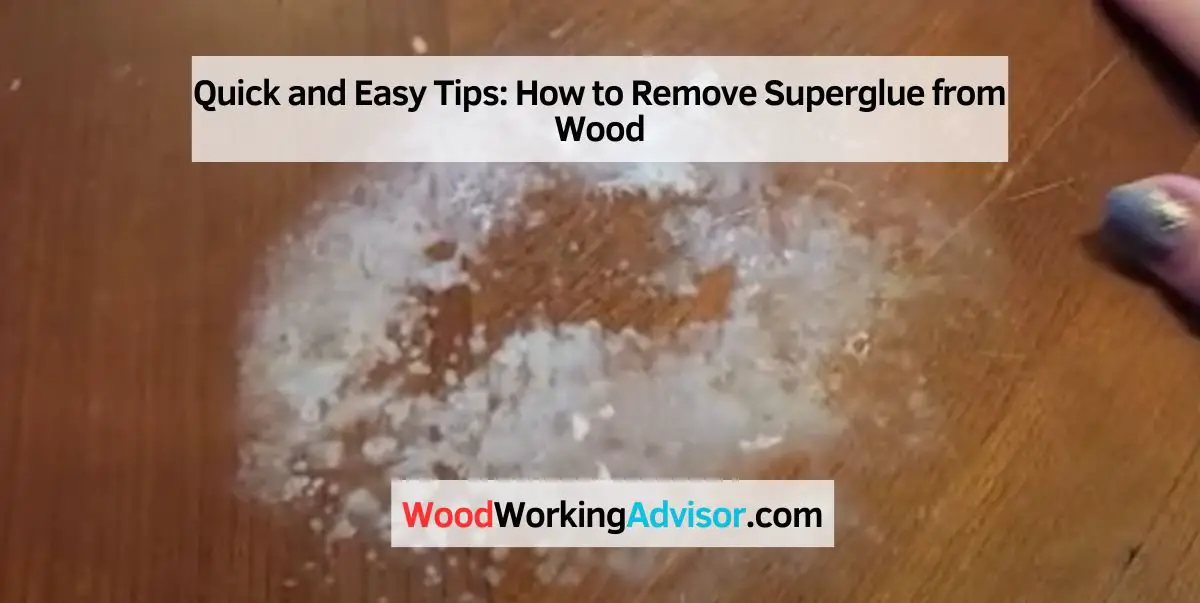To remove superglue from wood, apply acetone or nail polish remover to a cloth and gently rub the affected area until the glue comes off. Finding superglue on wood surfaces can be frustrating.
Whether it’s a table, furniture, or a wooden craft, accidents can happen, resulting in unwanted glue residue. Removing superglue from wood requires a delicate approach to avoid damaging the surface. We will explore the most effective method to remove superglue from wood.
By following these simple steps, you’ll be able to restore your wood surface to its original state and eliminate any traces of superglue.
Understanding Superglue
Superglue, also known as cyanoacrylate adhesive, is a fast-bonding adhesive that is commonly used in woodworking projects. It forms an incredibly strong bond when it comes into contact with wood surfaces, making it very difficult to remove once it has dried.
How Superglue Adheres To Wood
Superglue adheres to wood through a process called polymerization. When the adhesive comes into contact with moisture in the air, it reacts and forms long chains of molecules, creating a strong and durable bond. This reaction occurs rapidly, allowing the glue to cure in seconds and create an almost permanent attachment to the wood surface.
This quick-bonding property of superglue makes it a popular choice for woodworkers wanting to secure pieces together rapidly. However, it also poses a challenge when it comes to removing it from wood.
Why Superglue Is Difficult To Remove From Wood
Removing superglue from wood can be a challenging task due to its exceptional adhesive strength. The strong bond formed by the glue seeps into the wood fibers, making it virtually impossible to remove by simply pulling or scraping it off.
Moreover, applying excessive force or using sharp tools to remove the glue can damage the wood’s surface, leaving unsightly marks or scratches. Additionally, harsh solvents or chemicals that might effectively dissolve the glue could also harm the wood’s finish, further complicating the removal process.
Common Household Solutions
When it comes to removing superglue from wood surfaces, there are several common household solutions that can come to your rescue. These solutions are easily available in most households and can be highly effective in tackling the stubborn adhesive. Let’s explore two effective methods using acetone or nail polish remover and applying vinegar or lemon juice.
Using Acetone Or Nail Polish Remover
If you have acetone or nail polish remover at home, you’re in luck! This powerful solvent is known for its ability to break down superglue and make it easier to remove from a variety of surfaces, including wood.
Here’s how you can use acetone or nail polish remover to remove superglue from wood:
- Start by placing a small amount of acetone or nail polish remover on a clean cloth or cotton ball.
- Gently dab the affected area with the soaked cloth or cotton ball.
- Allow the acetone or nail polish remover to sit on the superglue for a few minutes to loosen its bond with the wood.
- Using a soft, non-abrasive cloth, gently wipe away the superglue.
- Repeat these steps as necessary until the superglue is completely removed.
Applying Vinegar Or Lemon Juice
If you prefer using natural solutions, vinegar or lemon juice can be effective in removing superglue from wood. These household staples contain acidic properties that can help break down the adhesive.
Follow these steps to remove superglue from wood using vinegar or lemon juice:
- Pour a small amount of vinegar or lemon juice onto a clean cloth.
- Gently rub the affected area with the soaked cloth.
- Allow the vinegar or lemon juice to sit on the superglue for a few minutes.
- Using a soft cloth, wipe away the superglue, applying slight pressure if needed.
- Repeat these steps until the superglue is completely removed.

Specialized Techniques
In addition to regular techniques, there are specialized methods to remove superglue from wood. These methods require a bit more precision and caution, but they can be highly effective in certain situations.
Utilizing Sandpaper Or Steel Wool
If the superglue has hardened on the wood surface, you can use fine-grit sandpaper or steel wool to gently sand away the glue. First, ensure that you are using a fine-grit sandpaper to avoid causing damage to the wood. Then, gently sand the affected area, being careful not to apply too much pressure. Continue this process until the glue is no longer visible, taking care to not over-sand the wood surface.
Using Commercial Superglue Removers
Commercial superglue removers can be effective for tackling stubborn superglue stains on wood. These specialized products are designed to dissolve superglue, making it easier to remove from the surface of the wood. When using a commercial superglue remover, it is essential to read and follow the manufacturer’s instructions carefully to ensure safe and effective application.
Precautions And Best Practices
When it comes to removing superglue from wood, there are precautions and best practices that you should keep in mind to ensure that you don’t damage the wood surface. These simple steps will help you protect surrounding areas and avoid any mishaps.
Protecting Surrounding Areas
Before you start removing superglue from wood, it’s important to protect the surrounding areas to prevent any accidental damage. Here are some best practices to keep in mind:
- Cover the nearby surfaces with plastic or old towels to create a protective barrier.
- Use painter’s tape to secure the protective covering in place, ensuring that it does not shift during the removal process.
- Avoid using excessive force or pressure when applying or removing the superglue to minimize the risk of damaging the surrounding wood.
| Precaution | Best Practice |
|---|---|
| Cover the nearby surfaces | Use plastic or old towels |
| Secure the protective covering | Use painter’s tape |
| Avoid excessive force | Minimize the risk of damage |
Testing On A Small, Hidden Area First
It’s always a good idea to perform a small test on a hidden area of the wood surface before attempting to remove superglue from a visible spot. This will help you determine the effects of the specific removal method you plan to use. Follow these steps when testing:
- Choose a small, inconspicuous area, such as the underside of the furniture or a corner that is usually hidden.
- Apply a small amount of the chosen removal solution, following the instructions carefully.
- Wait for the recommended time specified in the instructions to see the reaction on the wood.
- Observe any changes, such as discoloration or damage to the wood surface.
By testing on a small, hidden area first, you can ensure that the method you choose will not cause any further damage to the wood surface.
Now that you are aware of the precautions and best practices, you can confidently proceed with removing superglue from wood, knowing that you are taking necessary steps to protect the wood surface and surrounding areas.
Final Tips And Considerations
Although removing superglue from wood can be a challenging task, following the right steps and precautions can help you achieve satisfactory results. Here are some final tips and considerations to keep in mind:
Seeking Professional Help If Needed
If you have tried various methods and still can’t seem to remove the superglue completely from your wood surface, it may be time to seek professional help. Professional woodworkers or restoration experts have the necessary skills and equipment to safely tackle stubborn superglue stains without causing any further damage to the wood. Don’t hesitate to consult them for additional guidance and assistance.
Post-cleaning Wood Care
After successfully removing the superglue, it’s crucial to take care of your wood to maintain its appearance and integrity. Here are some post-cleaning wood care tips to consider:
- Inspect the wood surface for any lingering residue or damage. Clean it thoroughly using a gentle wood cleaner or a mixture of warm water and mild dish soap.
- Dry the wood surface completely to prevent any moisture-related issues, such as mold or swelling. Use a clean cloth or paper towels to ensure no excess moisture remains.
- Apply a suitable wood polish or wax to restore the shine and protection to the wood surface. Choose a product specifically designed for the type of wood you are working with.
- To maintain the longevity of your wood, avoid placing hot objects directly on the surface and use coasters or placemats to protect it from spills and scratches.
- Regularly dust and clean your wood furniture or surfaces to prevent dirt and debris from accumulating, which can degrade the appearance and cause scratches over time.
By following these post-cleaning care tips, you can ensure your wood retains its beauty and withstands daily wear and tear.

Frequently Asked Questions Of How To Remove Superglue From Wood
What Removes Dried Super Glue?
Acetone effectively removes dried super glue. Soak the affected area in acetone for a few minutes, then gently scrape the glue off. Wipe the residue with a cloth. Be cautious and use gloves while handling acetone.
What Dissolves Cured Super Glue?
Acetone effectively dissolves cured super glue. Apply acetone to a cloth and gently rub the glued area until it loosens.
Will Goo Gone Remove Super Glue From Wood?
Yes, Goo Gone can remove super glue from wood surfaces. It effectively softens and loosens the adhesive, allowing it to be wiped away easily without causing damage to the wood. Apply Goo Gone to the glue, let it sit for a few minutes, then gently remove with a cloth.
How Do You Remove Dried Glue From Wood?
To remove dried glue from wood, use a scraper or sandpaper to gently rub the affected area. Apply a small amount of acetone or vinegar to soften the glue. Wipe it off with a clean cloth. Be cautious not to damage the wood surface.
Conclusion
Removing superglue from wood can be achieved using various household items and methods. Whether it’s using acetone, oil, or heat, patience and care are key. Remember to test in an inconspicuous area and work methodically. With these tips, you can confidently tackle superglue stains on wood surfaces.


